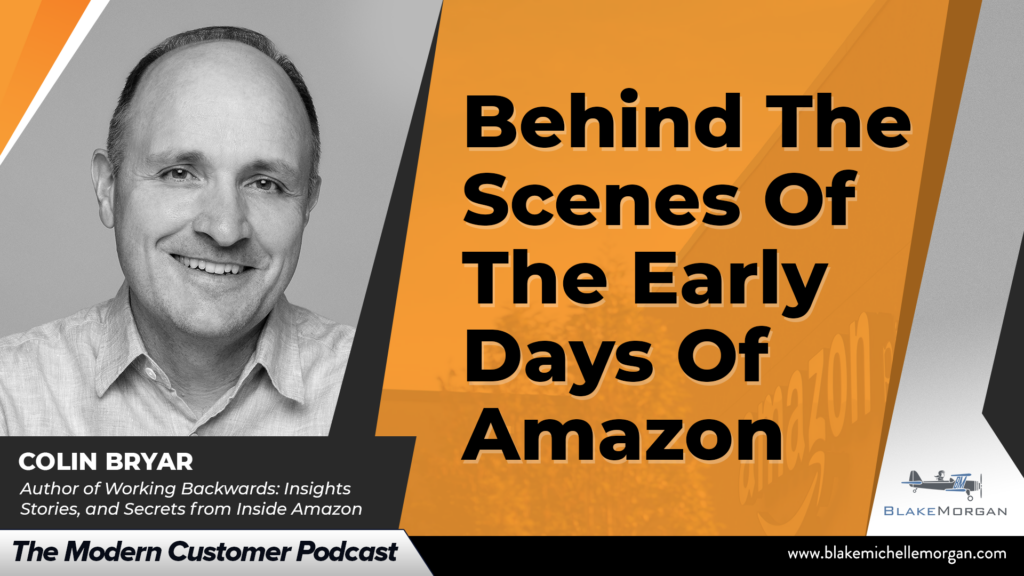Before Amazon became one of the world’s largest retailers, it was simply an online bookstore shipping items within the U.S.
But even in its early days, founder and CEO Jeff Bezos had a vision to build earth’s most customer-centric company.
That mentality still holds strong today and is a driving force behind Amazon’s continual success.
Colin Bryar joined Amazon in 1998, just four years after it was founded. Of his 12 years on the Amazon leadership team, he spent two of them working as Bezos’ Chief of Staff, where he had an inside view of what it takes to build a customer-centric company.
The early days of Amazon weren’t smooth sailing, but instead of focusing on stock price or what the press was saying, Bezos encouraged his employees to look at customer experience data. Focusing too much on stock price was a roller coaster—it could go up 30% one month and make you feel 30% smarter, but then drop 30% the next month and make you feel 30% dumber. Instead, the mentality at Amazon was to stay focused on the customer. Employees knew that if they did right with the customer, things would work out.
From the company’s beginning, customers came first. Bryar tells the story of how the customer service experience became even more customer centric.
All leaders at Amazon spend a few days every two years in the contact center, listening to calls, responding emails and eventually answering phone calls. On one occasion, Bryar and Bezos were listening in on a call from a customer who had received damaged lawn furniture. The call center agent asked for the product number, and as the customer was looking for it, looked at Bezos and Bryar and guessed exactly which product it was of the millions Amazon sold. The agent was right and explained that they had received multiple calls about that particular set arriving damaged—clearly, there was an issue with the packaging.
Amazon’s typical process for that type of issue was to have the call center agent file a report, which would then be forwarded to the feedback manager for that area. But with the calls coming so spread out, it would be difficult for the manager to notice a pattern and take action to solve the problem.
Instead, Amazon took a page from Toyota’s book to create an Andon Cord. In manufacturing, anyone on the assembly line can pull the cord if they detect a problem. Bezos created a virtual Andon Cord for the call center. If a customer service agent notices multiple calls for the same item, they can press a big red button that immediately removes the option to buy that product on Amazon. Bryar explains that it is better for customers to not be able to buy something no matter how painful the revenue loss is for Amazon than to send a defective product and have to deal with it later. Once the issue is addressed, the product is able to be sold on Amazon.
The idea of the contact center Andon Cord seems simple, but it shows how Amazon is working to operational excellence, even in its early years.
Bryar believes that focusing on customers, especially the example set by Jeff Bezos, is what has propelled Amazon to such great success. The company shows that no matter the industry or size, putting customers first always pays off.
Blake Morgan is the bestselling author of The Customer of the Future. Sign up for her new course here.
For regular updates on customer experience, sign up for her weekly newsletter here.

